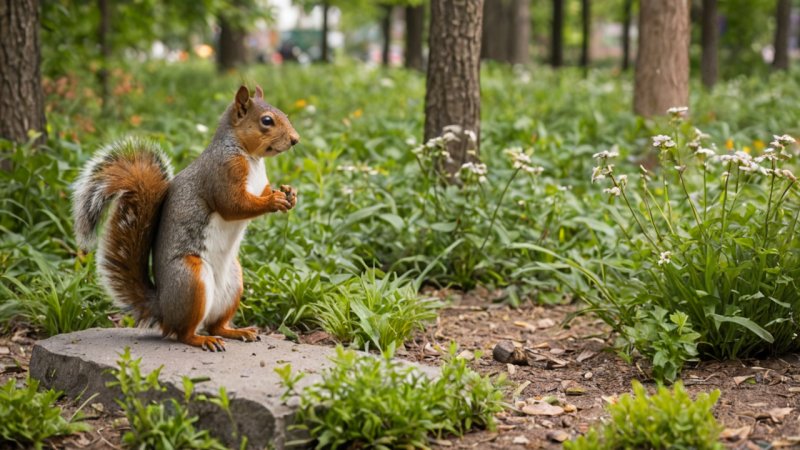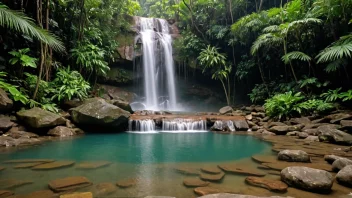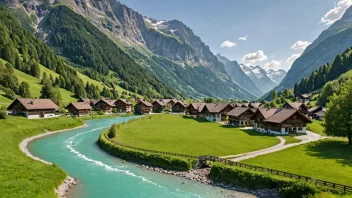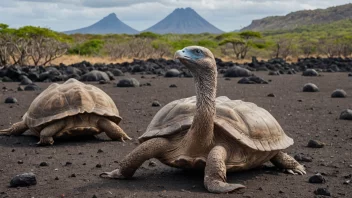Urban wildlife has begun to capture the imagination of city dwellers and nature enthusiasts alike. As urban areas expand and encroach upon natural habitats, an intriguing interplay occurs between wildlife and urban environments. This article delves into the world of urban wildlife, comparing two major aspects: the visible fauna that thrives in our cities and the often-overlooked flora that sustains them. We’ll explore the benefits and challenges of both, providing insights for those looking to engage with nature amidst the concrete jungle.
Visible Fauna: The Animals in Our Cities
Urban areas host a surprising variety of wildlife, from birds and mammals to insects. Some of the most common urban animals include:
- Squirrels: These agile rodents are often seen darting among trees and park benches.
- Pigeons: Frequently regarded as a nuisance, these birds are adept at living alongside humans.
- Raccoons: Known for their mischievous nature, raccoons thrive in urban settings, searching for food in bins.
- Foxes: Urban foxes are becoming more common, adapting to city life and often spotted at night.
Each of these animals brings unique interactions and dynamics to urban life. The pros of urban fauna include:
- Ecological Benefits: Urban wildlife plays a crucial role in pest control, pollination, and maintaining ecological balance.
- Community Connection: Observing wildlife can foster a sense of connection to nature, even in urban settings.
- Education Opportunities: Interacting with urban wildlife can serve as a gateway to educate communities about biodiversity.
However, there are also cons associated with urban wildlife:
- Human-Wildlife Conflict: Encounters can sometimes lead to issues, such as property damage or health concerns.
- Habitat Loss: Urban expansion can threaten natural habitats, leading to fewer resources for wildlife.
- Pollution Impact: Animals may suffer from pollution and habitat degradation, affecting their health and behavior.
Overlooked Flora: The Plants Supporting Urban Wildlife
While animals often steal the spotlight, urban flora is equally important in sustaining urban wildlife. Native plants, gardens, and green spaces contribute to the ecosystem in cities. Key points regarding urban flora include:
- Native Plants: These species are adapted to local conditions and provide essential food and habitat for wildlife.
- Community Gardens: Urban gardens promote biodiversity and create green spaces for people and animals alike.
- Street Trees: Trees line city streets and parks, offering shade, shelter, and sustenance to various creatures.
The benefits of urban flora are substantial:
- Environmental Health: Plants improve air quality, reduce heat, and manage stormwater, creating a healthier ecosystem.
- Wildlife Habitat: Green spaces serve as critical habitats for birds, insects, and other urban wildlife.
- Community Engagement: Gardening initiatives foster community spirit and encourage active participation in local ecology.
Nonetheless, urban flora faces challenges:
- Invasive Species: Non-native plants can outcompete local flora, reducing biodiversity and altering ecosystems.
- Neglect: Lack of maintenance can lead to overgrown or poorly managed green spaces, diminishing their potential.
- Urban Heat Islands: Some plant species may struggle in hotter urban environments, affecting their growth and health.
Comparative Analysis: Fauna vs. Flora in Urban Settings
When contrasting urban fauna and flora, several distinctions emerge. Wildlife is often more visible and dynamic, capturing the attention of residents, while plants work quietly in the background, providing essential support to these animals. Here are some key comparative points:
- Visibility: Fauna tends to be more easily observed, while flora requires a closer look to appreciate its importance.
- Impact on Ecosystem: Both are vital; however, animals often directly impact human perceptions, while plants contribute to ecosystem services.
- Engagement Opportunities: Urban wildlife can lead to immediate engagement (e.g., birdwatching), whereas flora may involve longer-term investment (e.g., gardening).
Conclusion
Urban wildlife presents a fascinating blend of nature and city life, highlighting the importance of both visible fauna and the often-overlooked flora that supports them. While urban fauna draws our attention and fosters engagement, the role of urban flora is equally critical in maintaining the ecological balance within city environments. For those looking to explore urban wildlife, a holistic approach that appreciates both animals and plants will provide the richest experience. By encouraging biodiversity in our cities, we can create vibrant ecosystems that benefit both nature and urban dwellers alike.






